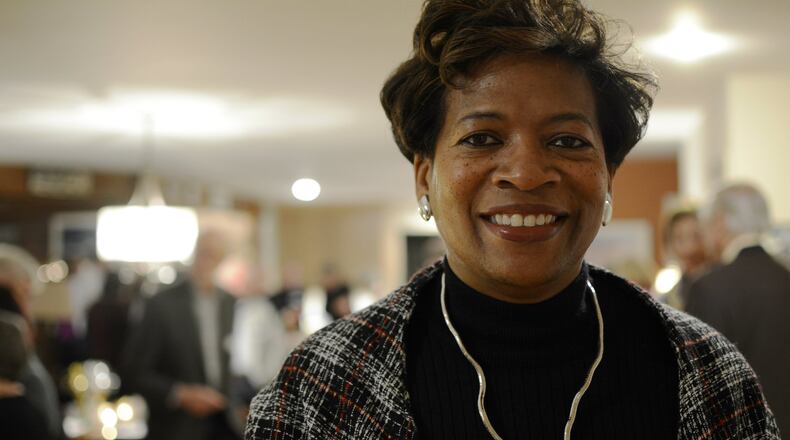“With a name like Melody, what else would I study in college?” Stewart said. “The only thing I wanted to study was music. That’s the only thing that interested me, that fascinated me.”
Stewart, 56, earned a Bachelor of Music degree in music theory from the College-Conservatory of Music at the University of Cincinnati, but the connection between music and a paycheck wasn’t a thought when she chose her major.
MORE POPULAR STORIES: Court documents detail investigations into southern Ohio militia members
”I saw the business of music and the love of music were two entirely separate things, and so I think I loved it too much to try to make a living at it,” she said.
That’s when she decided to pursue law so her living can help support her musical hobby.
That decision helped her make history in Ohio. Stewart, a Democrat, became the first African-American woman elected to the Ohio Supreme Court in November. Robert Duncan, a Republican, was the first African-American to elected (1969-1971) and Yvette McGee Brown, a Democrat, was the first African-American woman (appointed in 2011 but lost election in 2012).
Stewart shared her thoughts on her history, her position and her groundbreaking work when she spoke to the Butler County Progressives PAC in Oxford last week.
She earned her law degree at Cleveland-Marshall College of Law — where she later taught — and a Ph.D. at Case Western Reserve University. She also taught at the University of Toledo College of Law and Ursuline College.
In November, Stewart beat former Justice Mary DeGenaro, a Republican appointed to fill a vacancy created by former Justice William O’Neill when he ran for governor in 2018.
But history had nothing to do with her bid, said Stewart, whose first day on the job was Jan. 2.
“To me I was running to be a justice of the Supreme Court, to do the job,” she said. “The fact that I would be the first African-American female elected was not a historical significance lost on me, but it really didn’t factor in the campaign.”
Her focus was convincing people she was the better choice. Stewart only won 28 counties but received at least 40 percent of the vote in 57 of the remaining 60 counties.
She spent 12 years on the 8th Ohio District Court of Appeals before she decided to seek a seat on the Ohio Supreme Court, a race she said many doubted she’d win, given how Republicans have dominated statewide races. She was one of only three Democrats to win statewide in November 2018 (with Justice Michael P. Donnelly and U.S. Senator Sherrod Brown).
She won, she said, because she traveled across the state, talking with people, educating them about the Supreme Court and the judiciary. It also helped, she said, that judicial elections are non-partisan.
“We are more alike than we are unalike,” Stewart said.
Her time on the Ohio Supreme Court won’t be unlike her time on the appellate court, she said. The difference will be in the cases the court accepts.
“Keep in mind, I can do nothing by myself — I have six other colleagues — but I will decide cases the way I always have, based on what the law is to the facts,” Stewart said. “I think I bring a different insight to the court that will hopefully trigger different kinds of conversations about cases.”
She mostly hopes, though, to make the justice system better in the state, from the Supreme Court down to municipal courts.
“That’s working hard with the local bar associations across the state and the community in making courts better, and making things more receptive to people,” she said. “Just not having things be the same just because they were that way.”
Stewart is also one of the dozens of women elected to a state office. There were 28 women elected to the Ohio House this year, 14 of whom are first-time lawmakers. Stewart is part of a 4-3 female-majority, which is not the first time women outnumbered men on the court.
“I do think we do need diversity (on the court), and that’s gender diversity and that’s ethnic diversity, intellectual diversity,” she said.
About the Author

